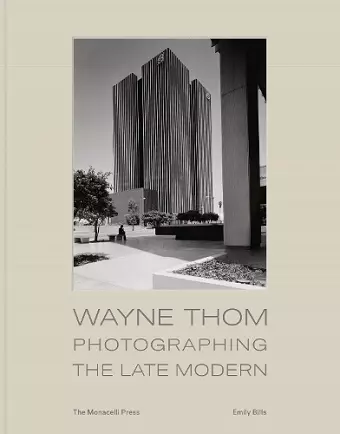Wayne Thom
Photographing the Late Modern
Format:Hardback
Publisher:Monacelli Press
Published:15th Dec '20
Currently unavailable, our supplier has not provided us a restock date

The first monograph of photographer Wayne Thom, whose documentation of Late Modern architecture constitutes an architectural/visual archive unlike any other
An innovative chronicler of the booming West Coast urbanism of the 1960s and 70s, Thom’s photographs of key projects by path-breaking architecture firms such as William Pereira & Associates, Edward Durell Stone, SOM, Gio Ponti, John Portman, I. M. Pei, and A. Quincy Jones helped establish the idea of cool architectural glamour of the era.
Raised in Hong Kong, Thom moved to California in the mid-1960s and trained in the technical craftsmanship of photography, adept at harnessing natural light for both interior and exterior compositions.
He soon began working with the figures who would become his clients and benefactors, most importantly William Pereira and A. Quincy Jones, a prolific architect and Dean of the School of Architecture at USC. As Emily Bills critically assess Thom’s career, she demonstrates that his photography became inseparable from Late Modernism in the popular imagination, a period of architectural production that ran from the late 1960s through the 1980s.
Wayne Thom: Photographing the Late Modern is a celebration of this key architectural photographer and a unique chronicle of the works of this transformative period of architectural expression.
“Wayne Thom photographed the power of 1970s architecture. He’s finally getting his due." - Los Angeles Times
“Readers will discover over 200 shots, recording trailblazing structures by I. M. Pei and Gio Ponti. Glowing colour prints are set against high contrast monochrome compositions, offering a visual spectacle.” - Aesthetica Magazine
“[Includes] page after page of Thom's remarkable photographs...” - Archidose
ISBN: 9781580935579
Dimensions: 286mm x 174mm x 24mm
Weight: 1520g
248 pages